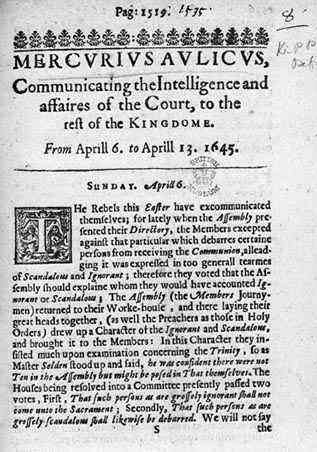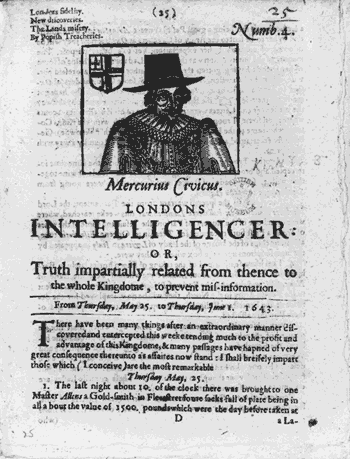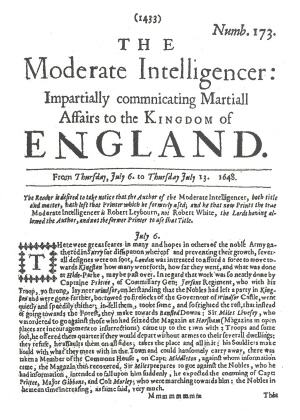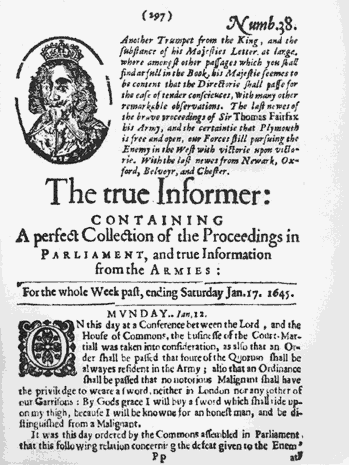The News Revolution in England
Behind the turmoil of revolution and civil war in England lurked the larger,
cultural reality of a nation-wide “war of words.” More than ever
before—in England
or anywhere else—the Revolution was a case of politics fought in the “public
sphere”: More than 22,000 newspapers,
newsletters, pamphlets, broadsheets, sermons and speeches were published between
1640 and 1661.
England was never without periodical news from 1638 on;
in addition to newspapers, something like 2,000 pamphlets were published in
1642 alone—an average of 6 pamphlets each day. This represented an outpouring
of argument and opinion in print the likes of which had not been seen since
the heady days of the Reformation.
The long-range cultural effects of this “News Revolution”
were profound: as one historian suggests, it added a new dimension to the “Media
Revolution” of the fifteenth and sixteenth centuries: Delivery of information
became periodic, regular; in England from the 1640s on, it arrived
in weekly bundles. Eventually, the “public sphere” would become
a potent political force in England and Europe as a whole.







